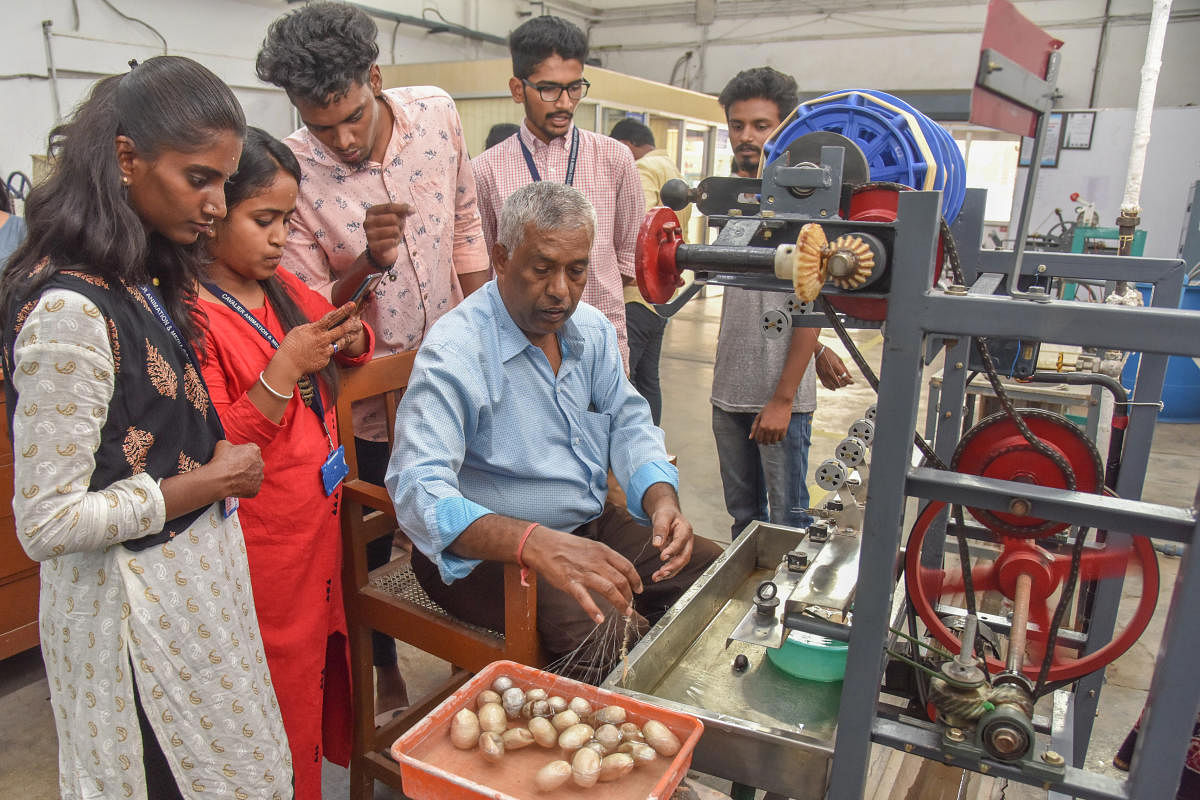
The Central Silk Technological Research Institute (CTRI) celebrated National Technology Day on May 11 by displaying the new ‘Post-Cocoon Technology’, used to reel, weave and process silk.
All the machinery at work during the consumer awareness programme was designed by scientists of CTRI.
The new technology promises to reduce labour, improve silk quality, conserve water and cut down pollution. With this, they will make sarees, besides using silk in medicine, cosmetics and nutraceutical purposes.
One of the contraptions introduced by the institute was a CTRI Eco-ERI degumming machine, which saves water and time to remove the gum from a cocoon.
In the post-cocoon phase, the institute introduced several tools, including an automatic reeling machine to ‘cook’ the cocoons. This machine would produce 60 kg of yarn per day, while a regular chakra (a machine used to make raw silk) will produce only 1 kg per day.
The cocoon is later deposited into the CTRI drying machine that would kill the worm inside. This process is
essential because the silk would eat through the cocoon and cause a mothball, rendering the cocoon unsuitable for pure silk.
Reeling and weaving are done in the Buniyaad reeling machine that has reduced the tedious work involved in thigh weaving. This machine is used to make tussar silk and can produce approximately 200 grams. Through thigh weaving, one can produce few grams lesser than that.
To create a design on the silk sarees, a pneumatic lifting mechanism machine is used, which includes card punches that produce designs on plain silk sarees.
To produce and supply these machines, the Government of India and beneficiaries have offered 50% to 90% subsidies to make them affordable to ordinary farmers and weavers.